 |
by Georgie Peru on (#71MN7)
Samsung's Odyssey G8 OLED monitor is now down to $950 for Black Friday, saving you $350. It's one of Samsung's best 32-inch displays, offering a crisp 4K resolution, a 240Hz refresh rate and vivid OLED contrast that makes games and movies look incredible. The 32-inch Odyssey G8 has earned high marks for its blend of image quality and gaming performance. Its 4K OLED panel produces deep blacks and bright highlights, with 99 percent DCI-P3 color coverage for vibrant visuals. The 240Hz refresh rate and 0.03ms response time deliver exceptional smoothness in fast-paced games, while AMD FreeSync Premium Pro keeps everything tear-free. Design-wise, it's sleek and minimal, with a slim metal frame that looks just as good in a work setup as it does in a gaming room. The monitor supports DisplayPort 1.4 and HDMI 2.1 inputs, plus USB-C connectivity for charging and data transfer. Built-in speakers and Smart TV features let you stream directly from apps like Netflix or Prime Video without connecting to a PC or console. You also get Samsung's SmartThings integration, so the Odyssey G8 can double as a smart home hub, controlling compatible IoT devices from lights to thermostats. It even supports cloud gaming through Xbox Game Pass and NVIDIA GeForce Now, meaning you can play high-end titles without extra hardware. The combination of OLED contrast, motion clarity and built-in streaming makes it one of the most versatile monitors in Samsung's lineup. If you want something even larger, the Odyssey G9 is also discounted by $300, bringing the 49-inch curved DQHD model down to $700. It offers a wide field of view and 144Hz refresh rate, making it a great pick for simulation and racing fans. The Odyssey G7 is another strong choice, now $600 after a $300 discount. This 37-inch 4K display runs at 165Hz with a curved design and supports both HDR and AMD FreeSync for smooth gameplay. Finally, Samsung's Smart Monitor M9 is available for $1,300, $300 off its regular price. It combines 4K OLED visuals with built-in streaming and AI-powered vision tools, making it a good all-rounder for work and entertainment. This article originally appeared on Engadget at https://www.engadget.com/deals/samsung-black-friday-deals-get-up-to-350-off-gaming-monitors-and-more-103000276.html?src=rss
|
 Engadget is a web magazine with obsessive daily coverage of everything new in gadgets and consumer electronics
Engadget is a web magazine with obsessive daily coverage of everything new in gadgets and consumer electronics
| Link | https://www.engadget.com/ |
| Feed | https://www.engadget.com/rss.xml |
| Copyright | copyright Yahoo 2026 |
| Updated | 2026-01-10 19:47 |
 |
by Nathan Ingraham on (#6R5X1)
Making a good digital picture frame should be easy. All you need is a good screen and an uncomplicated way to get your favorite photos onto the device. Combine that with an inoffensive, frame-like design and you're good to go.
|
 |
by Lawrence Bonk on (#71CV6)
Black Friday is a great time to take a look at what subscriptions you may be able to save on. From video streaming services to budgeting apps, many services will have some Black Friday promotion you may be able to take advantage of. One of the best we're tracking is for Audible. You can sign up and get your first three months for just $3 in total, plus get a $20 Audible credit on top of that. This breaks down to $1 per month for the first three months, which is a boon for audiobook fans. Just make sure to cancel before the 90 days are up, as the subscription will auto-renew at $15 per month. That's not the worst deal in the world, given the vast number of titles available on the platform, but still. Audible has a diverse catalog that goes beyond audiobooks. It also hosts podcasts and Audible Originals. Subscribers get to choose one audiobook each month to keep in their collection for free, including best-sellers or new releases. Users also get unlimited access to the Plus Catalog, which houses thousands of audiobooks. Finally, active members get discounts on many audiobooks when looking to purchase. Winter is coming and this is a good way to make sure you have plenty to listen to throughout the next three months. This deal does have a time limit. It expires on December 16.This article originally appeared on Engadget at https://www.engadget.com/deals/audible-black-friday-deal-three-months-of-access-drops-to-only-3-140010733.html?src=rss
|
 |
by Billy Steele on (#5W858)
The best soundbars can completely transform your TV setup, turning flat, lifeless audio into something that actually sounds cinematic. Whether you're watching blockbuster movies, listening to music or gaming, a good soundbar delivers clearer vocals, deep bass and better overall playback than most built-in TV speakers ever could.
|
 |
by Mariella Moon on (#71Q7A)
President Donald Trump has issued a new Executive Order that launches the Genesis Mission," an AI-focused initiative that will be led by the Department of Energy. It will harness the current AI and advanced computing revolution to double the productivity and impact of American science and engineering within a decade," the DOE explained. One of the mission's main goals is to build a centralized platform that will house a huge collection of datasets collected over decades of federal investments," as well as datasets from academic institutions and partners from the private sector.Those datasets will then be used to train scientific foundation models and to create AI agents, automate research workflows and accelerate scientific breakthroughs, the administration said in its announcement. The platform will connect the world's best supercomputers, AI systems, and next-generation quantum systems with the most advanced scientific instruments in the nation," the Energy department said.Based on that statement, the platform will be linked to the two sovereign AI supercomputers the agency is building at the Oak Ridge National Laboratory, its famous research and development center. The machines, to be built by Hewlett Packard Enterprises, are meant to be the Trump AI Action Plan's flagship supercomputers. The DOE previously revealed that the machines will be powered by AMD chips and will help tackle the biggest challenges in energy, medicine, health and national security.The Genesis Mission marks a defining moment for the next era of American science. We are linking the nation's most advanced facilities, data, and computing into one closed-loop system to create a scientific instrument for the ages, an engine for discovery that doubles R&D productivity and solves challenges once thought impossible," said Dr. Dario Gil, the Under Secretary for Science and Genesis Mission Director.In the next four months, the Energy department must identify its initial set of data and model assets for the Genesis platform. The department must be able to demonstrate an initial operating capability of the platform for at least one of the national science and technology challenges" the government has identified within nine months. While the list of challenges is pretty long, the Genesis Mission will focus on addressing three key challenges overall. First, it aims to accelerate nuclear and fusion energy, as well as to modernize the energy grid using AI. It also aims to power scientific discoveries for decades to come. Finally, it aims to create advanced AI technologies for the purpose of national security, such as systems that can ensure the reliability of America's nuclear weapons and can accelerate the development of materials for defense.This article originally appeared on Engadget at https://www.engadget.com/ai/trumps-genesis-mission-aims-to-build-a-centralized-ai-platform-to-power-scientific-breakthroughs-043506089.html?src=rss
|
 |
by Igor Bonifacic on (#71Q1B)
Cameo, the app that allows people to buy short videos from celebrities, has won an important victory in its legal battle against OpenAI. On Monday, a federal judge granted the company a temporary restraining order against OpenAI, CNBC reports. Until December 22, the startup is not allowed to use the word cameo" in relation to any features inside of Sora, its TikTok-like app for creating AI-generated videos. The order covers similar words like Kameo" and CameoVideo."We are gratified by the court's decision, which recognizes the need to protect consumers from the confusion that OpenAI has created by using the Cameo trademark," Cameo CEO Steven Galanis told CNBC. While the court's order is temporary, we hope that OpenAI will agree to stop using our mark permanently to avoid any further harm to the public or Cameo."An OpenAI spokesperson told Engadget: We disagree with the complaint's assertion that anyone can claim exclusive ownership over the word cameo', and we look forward to continuing to make our case to the court."Cameo sued OpenAI in October, claiming the company's use of the term was likely to confuse consumers and dilute its brand. Before filing the suit, Galanis said Cameo tried to resolve the dispute amicably," but claims OpenAI refused to stop using the name. Sora's cameo feature allows users to upload their likeness to the app, which other people can then use in their own videos. US District Judge Eumi K. Lee, who granted Cameo the temporary junction, has scheduled a hearing for December 19 to determine if the order should be made permanent.Update, November 24, 7:25PM ET: This article was updated after publish to include comment from an OpenAI spokesperson.This article originally appeared on Engadget at https://www.engadget.com/ai/openai-cant-use-the-term-cameo-in-sora-following-temporary-injunction-213431626.html?src=rss
|
 |
by Kris Holt on (#71PZ9)
One of the more intriguing prospects Amazon revealed at its devices and services event back in September was Alexa Home Theater, a surround sound mode for select Echo speakers. Amazon has now confirmed to Engadget that it's rolling out Alexa Home Theater "broadly" starting today.This could make Echo speakers a more budget-friendly, entry-level alternative to a Sonos setup in some consumers' eyes - though a good soundbar may be actually a better bet for those just starting to put together a home theater system. You can connect up to five of the company's new Echo Studio or Echo Dot Max speakers plus a subwoofer to a Fire TV Stick 4K or 4K Max (the original Echo Studio isn't compatible).Amazon said that, after you plug in several Echo devices in the same room as your TV and link them to the same Wi-Fi network, the Alexa app can walk you through the setup process. Alexa will automatically tune the speakers for your space.As it happens, the latest Echo Studio and the Echo Dot Max are both on sale for Black Friday, along with other Amazon devices. The Echo Studio is $30 off at $190 and the Echo Dot Max has dropped by $10 to $90.This article originally appeared on Engadget at https://www.engadget.com/audio/speakers/alexa-home-theater-surround-sound-for-echo-speakers-is-rolling-out-now-204557932.html?src=rss
|
by Billy Steele on (#6ARQQ)
In the last few years, pizza ovens have become as much of a backyard staple as a grill. There are many options for making restaurant-quality pies at home in a range of styles. What's more, many models allow you to change up the fuel type, and some even allow you to do more than simply fire off pizzas. I've compiled a list of the best pizza ovens that you can buy right now, with selections for multi-fuel ovens, compact designs and indoor pizza parties. I've also included some buying advice on what to consider before you commit and how to get the most out of your at-home pizza making experience. Table of contents
 |
by Lawrence Bonk on (#71PZB)
It's been a long road to get here, but the surreal skateboarding sim Skate Story will actually be available to play on December 8. The title will also be a day-one Game Catalog release for PlayStation Plus subscribers, which is a great perk for Sony fans. It'll be available on other platforms, like Steam and Nintendo Switch, but those versions cost $20. The PS5 version is free for PS Plus subscribers and it's not currently coming to Xbox.For the uninitiated, Skate Story can only be described as a Lynchian take on skateboarding. Players control a glass avatar and they perform tricks to, well, swallow the moon and defeat the devil. It was announced all the way back in 2020. We got to play it last year and came away impressed. The game was made by Sam Eng, who was behind the indie shooter Zarvot.It's also being published by Devolver Digital, a company that knows its way around unique gameplay concepts. It published the utterly sublime Cult of the Lamb and one of our recent favorites, Ball x Pit. The former lets you feed poop to cult followers, which makes performing kickflips as a glass-bodied demon seem downright normal.Looking to see what all of the fuss is about? There's a demo right now on Steam. The game's also available for purchase on the PS5, for those who don't wanna pony up for a PS Plus subscription.This article originally appeared on Engadget at https://www.engadget.com/gaming/playstation/skate-story-grinds-its-way-to-playstation-plus-on-december-8-193034939.html?src=rss
|
 |
by Igor Bonifacic on (#71PX1)
Hot on the heels of Google's Gemini 3 Pro release, Anthropic has announced an update for its flagship Opus model. Now at version 4.5, the new system offers state-of-the-art performance in coding, computer use and office tasks. No surprise there, those have been some of Claude's greatest strengths for a while. The good news is Anthropic is rolling out a handful of existing tools more broadly alongside Opus 4.5. It's also releasing one new feature.To start, the company's Chrome extension, Claude for Chrome, is now available to all Max users. Anthropic is also introducing a feature called infinite chat. Provided you pay to use Claude, the chatbot won't fall to context window errors, allowing it to maintain consistency across files and chats. According to Anthropic, infinite chat was one of the most requested features from its users. Then there's Claude for Excel, which brings the chatbot to a sidebar inside of Microsoft's app. The tool is now broadly available to all Max, Team and Enterprise users, with support for pivot tables, charts and file uploads built-in.A table comparing Opus 4.5's efforts in various benchmarks. AnthropicOn the subject of Excel, Anthropic says early testers saw a 20 percent accuracy improvement on their internal evaluations and a 15 percent improvement in efficiency gains. As a complete Excel noob, I'm excited to for the company to trickle down that expertise to its more consumer-oriented models, Claude Sonnet and Haiku.Elsewhere, Opus 4.5 also delivers improvements in agentic workflows, with the new model excelling at refining its own processes. More importantly, Anthropic is calling Opus 4.5 its safest model yet. It's better at rejecting prompt injection style attacks, outpacing even Gemini 3 Pro, according to Anthropic's own evaluations.If you want to try Opus 4.5 for yourself, it's available today through all of Anthropic's apps and the company's API. For developers, pricing for the new model starts at $5 per million tokens.This article originally appeared on Engadget at https://www.engadget.com/ai/anthropics-opus-45-model-is-here-to-conquer-microsoft-excel-190000905.html?src=rss
|
 |
on (#71PX2)
With Black Friday around the corner, OpenAI is upgrading ChatGPT's shopping capabilities just in time to make spending your money even easier. Starting today, the company has begun rolling out shopping research, a new feature inside of ChatGPT designed to simplify the process of comparing different products.The tool is available to all ChatGPT users, including those with free accounts, with the company offering nearly unlimited usage through the holidays. As long as you're logged into your OpenAI account, you can try out the new experience by selecting "Shopping research" from the + menu. ChatGPT will also automatically route prompts it determines would be best served by the new model OpenAI has trained to answer commerce-related questions. For instance, if you type, "find the quietest cordless stick vacuum for a small apartment," ChatGPT will know what to do.As it works to find products that fit your criteria, ChatGPT will ask clarifying questions. OpenAIIn addition to comparative shopping, the new experience can help users track down deals, shop for gifts and even find lookalike products. For example, you can snap a photo of a dress and ask ChatGPT to find you something similar that costs less than $250. As you use the tool, ChatGPT will ask clarifying questions to help it narrow down its recommendations. For ChatGPT Pulse users, the tool will even be proactive, generating cards that offer personalized buying guides based on past conversations.The feature is powered by a variant of GPT-5 mini designed to excel specifically at shopping-related tasks. "We trained it to read trusted sites, cite reliable sources and synthesize information across many sources to produce high-quality product research," said OpenAI. In practice, the shopping assistant should be better at accurately citing product details relative to the company's other systems, including more powerful general-purpose models like GPT-5 Thinking. Still, OpenAI warns the tool isn't perfect."Shopping research might make mistakes about product details like price and availability, and we encourage you to visit the merchant site for the most accurate details," the company said. Additionally, OpenAI notes the tool tends to do best in categories like electronics, beauty and home appliances where there are many details and specs the model can compare to generate comprehensive answers.It's no surprise to see OpenAI expand ChatGPT's shopping capabilities. The company already offers the option to buy items from Etsy from its chatbot, and competitors like Google have been aggressively adding AI shopping features in recent months.This article originally appeared on Engadget at https://www.engadget.com/ai/chatgpt-now-offers-a-dedicated-shopping-assistant-180000034.html?src=rss
|
 |
by Lawrence Bonk on (#71PRR)
There are millions upon millions of podcast episodes out there and it can be tough to figure out what to listen to and when. The popular podcast service Pocket Casts is rolling out a playlists feature to help users make sense of it all.This is being advertised as a "new way for listeners to organize, sequence and customize episodes across all their favorite shows." The idea of a playlist isn't new by any stretch, but it's not typically an option on podcast apps. As a matter of fact, Pocket Casts says this was one of its most-requested features.The platform says this tool is great for "building a morning news lineup, curating interviews to study a topic or creating a queue for a long flight." There's a manual option but also an automatic Smart Playlists feature that gathers episodes together based on pre-determined rules.Pocket Casts For instance, episodes can be collected and sorted by release date, duration and other factors. This replaces the pre-existing filters tool. I can absolutely see this being useful on a road trip when you don't really wanna fiddle with a phone and would rather just let the podcast episodes flow into one another to create a Conan O'Brien-induced driving zen state.The playlists tool is available right now. This is just the latest move by Pocket Casts. The service recently added a free tier for accessing its web player and desktop app. We love it when things get cheaper, don't we folks?This article originally appeared on Engadget at https://www.engadget.com/entertainment/pocket-casts-rolls-out-playlists-so-users-can-sequence-episodes-of-their-favorite-shows-170046666.html?src=rss
|
 |
by Sam Chapman on (#5RR2Q)
We're a pet-loving staff here at Engadget, with diverse distribution of cat people, dog people, other-small-fuzzy-creature people, bird feeder enjoyers and so on (at press time, I'm unsure if we have a rat person, but I'd be surprised if we didn't). And, of course, we love getting new gadgets of all sorts for our pets as much as for ourselves. This list, with gifts as low-tech as a blanket and as high-tech as the best $30 two-way camera you'll ever use, is for the pet lover in your life - whether that's you or another favorite human. Every entry comes waggingly approved by at least one fuzzy friend. Best gadgets for your pets Check out the rest of our gift ideas here. This article originally appeared on Engadget at https://www.engadget.com/home/smart-home/the-10-best-gadgets-for-your-pets-150714288.html?src=rss
|
 |
by Sarah Fielding on (#71PGW)
Uber is apparently feeling generous this holiday season. The company is launching family sharing for Uber One members, allowing individuals to add another adult to their account for free. They can also include an unlimited number of teens.Anyone added to the membership can access all of the same benefits, including free delivery. They will also earn unique credits for rides. You can attach someone to your membership by clicking Account and then Uber One. From there, you can tap manage membership and then family sharing.UberUber is also giving members additional perks, like prioritized complimentary upgrades. The company claims that it will upgrade over one million rides for members between December 2 and 25. Plus, members traveling between today and Thursday for Thanksgiving should get 10 percent off if booking an Uber Black to or from an airport.Tech lovers with an Uber One subscription will be happy to hear that you can get early access to $25 off if you spend $75 or more at Best Buy - through Uber Eats, of course.This article originally appeared on Engadget at https://www.engadget.com/apps/uber-one-subscribers-can-now-share-free-deliveries-and-other-perks-with-their-family-120004629.html?src=rss
|
 |
by Steve Dent on (#71PF9)
If you're a creator in the market for a good-quality wireless microphone, DJI has the best deal we've ever seen on one of its most popular products. This Mic Mini bundle, which includes two mics, a receiver and two charging docks (plus two windscreens and other accessories), is already a good deal at the regular $119 price. For Black Friday, however, it's marked down to just $66 for a savings of 45 percent. If you only need a single wireless mic, you can also grab a Mic Mini with a mic, receiver, charging dock and accessories for $45, or 49 percent off the regular price. DJI's Mic Mini deal includes two mic transmitters and a receiver that can be connected to a camera or phone. The bundle also includes a pair of charging docks, two windscreens, a splitter USB-C cable for charging, a 3.5mm camera audio cable, two magnetic clips, a smartphone adapter, a charging cable and a compact carrying case. Note that the charging case is not included in this deal. And if you want a simpler setup with just a single mic and receiver, plus all the other accessories, that's also on sale for $45, or 53 percent off. The wireless mics weigh just a third of an ounce and attach easily to subjects via magnets or clips. Everything pairs automatically and they offer high quality 24-bit, 20Hz to 20K Hz recording. They also connect easily to smartphones over Bluetooth and other DJI devices like the Action 5 Pro and Osmo Pocket 3 cams using DJI's OsmoAudio direct connection. With a range of 1300 feet and 48 hours of battery life with the charger case, they're an excellent addition to a creator's bag of tricks.This article originally appeared on Engadget at https://www.engadget.com/audio/djis-mic-mini-bundle-drops-to-just-66-for-black-friday-102735161.html?src=rss
|
 |
by Amy Skorheim on (#6P4YV)
Laptop power banks hit a happy medium between capacity and portability. Capacity is usually below 100-watt hours to comply with TSA requirements for carry-on luggage. Since most batteries are listed in milliamp hours, that works out to around 27,000mAh or less - but not too much less. Anything below 20,000mAh won't be able to give any meaningful charge to a laptop's battery. Other than that, these larger portable chargers don't differ all that much from any other battery - and there are thousands of options out there with varying degrees of value, utility and function. We tested dozens to help you pick out the best laptop battery for your next trip away from an outlet. Table of contents
|
 |
by Lawrence Bonk on (#71NG8)
Black Friday has brought a solid discount to one of DJI's most accessible drones. The DJI Neo is now $159 for Prime members, which is 20 percent off its typical $200 price and a strong pickup for first-time flyers. The DJI Neo was recently pushed off our list of the best drones in favor of the newer Neo 2, but the original is still a fantastic, budget-friendly option. We called it the "best $200 drone ever made" in our official review, and with good reason. It's quick, ultra-maneuverable and beginner-friendly. The learning curve here isn't that steep. It boasts four propeller guards, for safety, and the built-in 4K camera certainly gets the job done. It's extremely light, weighing just 135 grams. This makes it easy to transport, sure, but also means that the Neo is exempt from drone license requirements. This version doesn't ship with a dedicated controller, though there is a combo pack for that, but that doesn't really matter here. The Neo can be maneuvered by hand gestures, human voice, mobile app or standard RC controller. This article originally appeared on Engadget at https://www.engadget.com/deals/the-dji-neo-drone-drops-to-159-in-this-black-friday-deal-155647918.html?src=rss
|
 |
by Mat Smith,Nicole Lee,Valentina Palladino on (#5Z9HP)
Air fryers have earned their spot on countless countertops for good reason. They make it easy to whip up crispy fries, roasted vegetables and even baked treats without dealing with a pot of hot oil or larger, slower appliances. These compact machines use rapid hot air circulation to deliver crunch and flavor with less mess, making them a practical upgrade for busy cooks or anyone looking to simplify weeknight meals.
|
 |
by Cheyenne MacDonald on (#71P7P)
After taking a break from the Playdate following Season Two and the wonderfully weird experience that was Blippo+, I finally dusted off my little yellow console this week and dove back in. And what better place to start than with a couple of games about cheese? Cheese 'n Crackers and Say When! both hit the Playdate Catalog recently, but aside from the thematic similarity, they're two very different games. As an extra treat (unrelated to cheese), I also picked up Ware-wolf Campfire Stories, a free game on itch.io that's actually over a dozen bite-sized games in one.Cheese 'n CrackersWhen it comes to snacking, everyone's got their preferences. Some crave a savory blast of umami, while for others, a sweet treat might be what always hits the spot. Or maybe you're like me, and if you have one, it needs to be followed by the other. Creating snacks that hit just right is what Cheese 'n Crackers is all about.In this Playdate game, you have what is essentially a neverending charcuterie board with all the fixins you could imagine. There are meats, cheeses, spreads, spices, vegetables, fruits and various types of crackers and breads to adorn with those toppings. You have to combine ingredients to make the perfect snacks for whatever group you're serving that round. Each group - like the Speed Daters or Grandma's Bridge Club - has a specific set of guidelines that may include favorites, dietary restrictions or aversions to certain tastes.A still from the Playdate game Cheese n Crackers showing a cutting board with various meats, vegetables, cheeses and crackersScenic Route SoftwareWhile pairing ingredients is pretty intuitive, there are specific combinations that will earn you more points, so you'll have to pay attention to descriptions of each food item. Or, you can turn to the Cheese 'n Crackers Compatibility Spreadsheet for all of that information in one place. Yes, that exists, and it's an intimidating work of culinary organization. Toppings will go bad if they sit out for too long, so you won't want to waste too much time scouring the spreadsheet, but it's still a relatively low-pressure game that you can play at your own pace. For the more competitive among us, though, there are leaderboards so you can challenge yourself with scores to beat.Say When!This is the more intense of our cheese games, with a Root Bear-like structure that sees you tending to a revolving door of restaurant patrons and trying to grate the perfect amount of cheese for their meals using the crank. And despite being called Say When!, your customers (very unhelpfully) will not actually say "when" to let you know you can stop cranking; you have to pay attention to their unique tells to know when they're satisfied - the twitch of a mustache, a change in facial expression, etc.A still from the Playdate game Say When! showing a man wearing dark sunglasses sitting at a table, with a dish in front of him. Grated cheese is pouring onto the dish from a cheese grater that floats above itSmashtoad StudiosThere's a customer satisfaction meter at the top of the screen that will take hits any time you under- or over-serve cheese, or suffer if you're moving too slowly, and once it's down to the bottom, you're fired. After each shift, you'll be given the choice to use a modifier that can help you out in areas like customer satisfaction or getting the boss off your back. To mix things up, there are also mini-games that pop up in the middle of your shift. You might be furiously grating cheese and then have to switch gears and save the life of a choking customer, for example.It's fast-paced, it's silly and it's pretty hard to put down once you get going.Ware-wolf Campfire StoriesWhile the Playdate Catalog has lots of great titles to choose from, there are plenty of gems not on there that are worth checking out too. One such example is Ware-wolf Campfire Stories, a unique package of 14 tiny games that's free on itch.io. It's the result of a collaboration between 15 developer teams - including the developers of Off-Planet Dreams, the Life's Too Short series, Voidblazers and other popular Playdate titles.Per the description:
|
 |
by Jackson Chen on (#71P50)
Social media is an overwhelming part of our lives these days, but the Pew Research Center provided an in-depth look at just how much we rely on these platforms. In a 2025 report that looks at social media usage with American adults, the data-driven think tank revealed some nitty-gritty details like year-to-year changes, age gaps and most importantly, frequency of use.At the number one spot, YouTube holds a dominant position, with 84 percent of the 5,022 adults surveyed saying they use Alphabet's video-sharing platform. Meta earns silver and bronze medals since 71 percent of adults said they use Facebook, while 50 percent responded positively when it comes to Instagram use. However, not all of Meta's social media outlets are doing well. Threads may have hit 400 million monthly active users this summer, but only eight percent of adults surveyed said they use it. Rounding out the bottom of the list, only 21 percent of adults surveyed said they use X, while four percent of adults said they're on Bluesky and three percent are on Truth Social.Besides popularity, the Pew Research Center also explored the frequency with which American adults use their preferred social media platforms. In a separate survey with 5,123 adults, the report uncovered that 52 percent of adults go on Facebook daily, with 37 percent of them logging on several times a day. Nearly as frequently, 48 percent of adults use YouTube daily, including 33 percent of that demographic watching videos on the platform several times a day. When looking at frequency through the lens of age gaps, the starkest difference is found with 47 percent of adults between 18 and 29 using TikTok at least once a day, while only five percent of those aged 65 or older use the ByteDance-owned app every day.When looking at annual trends, YouTube and Facebook have largely maintained stable usage - and even some growth - since 2021. Even though it may feel like Facebook has begun to stagnate, the report shows that it has a loyal user base that's still growing at a consistent rate. On top of that, Meta is still continuing to update the social media platform, including recently revamping Facebook Marketplace.This article originally appeared on Engadget at https://www.engadget.com/social-media/the-most-popular-social-media-platform-among-us-adults-isnt-instagram-or-tiktok-195823871.html?src=rss
|
 |
by Jackson Chen on (#71P38)
Valve shook up the gaming world with the announcement of the Steam Machine, but we're all still curious about the million-dollar question of pricing. While there's plenty of speculation, we finally have some sort of indication from Valve directly. In an interview with Skill Up's Friends Per Second podcast, Valve's Pierre-Loup Griffais revealed that the Steam Machine will not be subsidized but will still have competitive pricing."I think that if you build a PC from parts and get to basically the same level of performance, that's the general price window that we aim to be at," Griffais said on the podcast. "Obviously, our goal is for it to be a good deal at that level of performance, and then you have features that are actually really hard to build if you're making your own gaming PC from parts."Griffais didn't offer a concrete price range since Valve was still early in the process, adding that "right now is just a hard time to have a really good idea of what the price is going to be because there's a lot of different things that are fluctuating." When asked if the Steam Machine would be subsidized like how other companies often sell new consoles at a loss or slim profit margin to generate early momentum, Griffais said no and that it would be "more in line with what you might expect from the current PC market."However, Griffais also revealed that Valve is potentially interested in doing a Steam Machine Pro, but that the company is currently focused on this mid-range level as a "good trade off between affordability and the level of power we get."This article originally appeared on Engadget at https://www.engadget.com/gaming/valve-says-that-the-steam-machines-price-will-be-more-in-line-with-current-pc-market-182213173.html?src=rss
|
 |
by Cheyenne MacDonald on (#71P39)
After years of introducing major changes with its annual iOS releases, Apple may be altering its approach next time around, instead focusing on refinement over a bevy of flashy new features. According to Mark Gurman in this week's Power On newsletter, for iOS 27, Apple is "focused on improving the software's quality and underlying performance." That, and beefing up its AI offerings.On the heels of iOS 26, which brought the Liquid Glass design overhaul, and the trickle of underbaked AI features that have arrived since the rollout of Apple Intelligence last year, Apple is reportedly honing in to improve the experience. Gurman writes that "engineering teams are now combing through Apple's operating systems, hunting for bloat to cut, bugs to eliminate, and any opportunity to meaningfully boost performance and overall quality." Gurman compares the strategy to 2009's Snow Leopard release for Mac, which focused on bug fixes, decluttering and efficiency.Catching up on AI is a major priority as well, the report notes. The company is working on an AI web search tool and an Apple Intelligence overhaul, alongside plans to integrate its AI into more apps. We still have yet to see the smarter, more personal AI-powered Siri the company has been talking about since 2024, but that's expected to arrive before iOS 27 - possibly with iOS 26.4 this coming spring, according to Gurman.This article originally appeared on Engadget at https://www.engadget.com/mobile/smartphones/ios-27-will-reportedly-focus-on-performance-improvements-and-ai-upgrades-175700261.html?src=rss
|
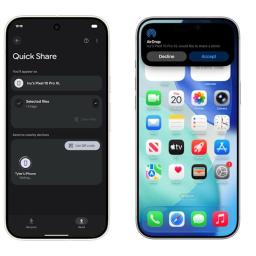 |
by Jackson Chen on (#71P1W)
Building on Google's recent announcement that Android's Quick Share will work with iOS' AirDrop for Pixel 10 smartphones, Qualcomm revealed in a post on X that the cross-platform file-sharing feature will be available on devices powered by its Snapdragon chips. In the post, Qualcomm said that it "can't wait for people to use this once enabled on Snapdragon in the near future."It's not a complete surprise since Google mentioned in its announcement that Quick Share to AirDrop would come to more Android devices. However, the Snapdragon confirmation acknowledged that this new compatibility wouldn't be limited to Pixel smartphones or devices running Google Tensor chips. Soon, we could have the ability to share files with iPhone users, even if it's with a Samsung Galaxy smartphone, a OnePlus device or even Nothing phones.Qualcomm didn't specify exactly when or which smartphones will get this Quick Share to AirDrop feature, but we might see it come to more devices than just smartphones, like tablets or laptops. Along with this latest file-sharing feature, Apple's announcement of iOS 18 getting RCS compatibility has reduced the longstanding friction between smartphone operating systems.This article originally appeared on Engadget at https://www.engadget.com/mobile/smartphones/snapdragon-devices-will-soon-be-able-to-transfer-files-to-iphones-via-quick-share-164835065.html?src=rss
|
 |
by Jackson Chen on (#71NMP)
Google made its final arguments in a longstanding case against the US Department of Justice on whether it has to split up its ad tech practices. However, the judge presiding over the case may be looking to wrap up the case before Google has a chance to appeal, according to a report from Reuters.On Friday, both sides made their closing statements in the lawsuit where the Justice Department accused the tech giant of illegally monopolizing the ad tech market. While the US District Court Judge Leonie Brinkema ruled in April that Google held a monopoly in the online adtech space, the judge recently asked the Justice Department how quickly an anticompetitive measure could go into effect, adding that "time is of the essence."Google's attorney, Karen Dunn, argued that forcing Google to sell its advertising tech subsidiary would be extreme and hurt customers in the process, according to the report. Google is also reportedly planning to appeal the latest decision. According to Reuters, Brinkema noted that any sort of remedy "most likely would not be as easily enforceable while an appeal is pending," meaning that Google could delay the forced sale until the appeal is concluded. At the same time, Google is facing a $3.5 billion fine for violating the European Union's antitrust laws within the adtech industry.This article originally appeared on Engadget at https://www.engadget.com/big-tech/a-decision-about-breaking-up-googles-adtech-monopoly-is-on-the-horizon-184409011.html?src=rss
|
 |
by Mariella Moon on (#71NK0)
Microsoft will not release a diversity and inclusion report for 2025 like it has been doing every year since 2019, Stephen Totilo from Game File has reported. Totilo asked the company if it was skipping this year after it failed to publish a report from October to early November like it had done so the previous years. We are not doing a traditional report this year as we've evolved beyond that to formats that are more dynamic and accessible - stories, videos, and insights that show inclusion in action," said Microsoft's chief communications officer, Frank Shaw, in a statement. Our mission and commitment to our culture and values remain unchanged: empowering every person and organization to achieve more."As Totilo notes, the Trump administration made it very clear early on that it was against government and corporate diversity, equality and inclusion programs. Trump signed executive orders directing government agencies to roll back DEI initiatives and encouraged the private sector to do the same. Meta reportedly ended its DEI programs earlier this year, while Google reportedly announced that it will no longer set hiring targets to improve representation in its workforce."Totilo previously reported that Microsoft didn't mention anything about its diversity programs in two shareholder reports for 2025, signifying that the company wasn't highlighting its DEI initiatives anymore like it did the previous years. Based on its statement, Microsoft isn't completely dropping its DEI efforts. Without a report, however, we can't keep an eye on its progress when it comes to things like pay equality and workforce diversity.This article originally appeared on Engadget at https://www.engadget.com/big-tech/microsoft-isnt-releasing-a-diversity-report-for-2025-180000401.html?src=rss
|
 |
by Matt Tate on (#71DW7)
Black Friday might still be a few days away, but there's no need to wait if you're in the market for a new air fryer, as one of our longtime favorite models is currently $50 off. The Ninja DZ401 is $180 right now, which is a saving of 22 percent on its usual price. Admittedly, we have seen this model a bit cheaper in the past, but if you're on cooking duty for Thanksgiving, you might not have the option of waiting until what could be a deeper discount on Black Friday. And the DZ401 is the perfect air fryer for the holiday season, owing to its trademark dual baskets, which allow you to cook up two completely different foods simultaneously. It takes up a fair amount of space, but it's worth it if you have a lot of hungry mouths to feed. This 10-quart fryer includes a smart cook thermometer and six cooking modes, including air broil, roast and dehydrate alongside the default air fry mode. The spacious baskets are quick and easy to clean, and you're safe to throw the plates into the dishwasher if they're particularly messy after cooking up chicken wings or some brownies for dessert. The Ninja DZ401 has had the title of best dual-zone air fryer in our buying guide for a long time for a reason. An air fryer like this isn't for everyone, especially those with smaller kitchens, but for a Thanksgiving dinner you'll struggle to find better. A number of other Ninja devices are on sale for Black Friday right now. If you don't need quite as big of a machine, the Ninja Crispi glass air fryer/multicooker could be a better option. It's down to $160 right now. This article originally appeared on Engadget at https://www.engadget.com/deals/black-friday-deal-get-22-percent-off-one-of-our-favorite-ninja-air-fryers-170959949.html?src=rss
|
 |
by Mariella Moon on (#71NK1)
The California DMV has approved Waymo's request to conduct driverless testing and to deploy its robotaxis in more locations in the state. As CBS News reports, Waymo now has the permission to operate across the whole Bay Area, Sacramento and most of Southern California up to the border of Mexico. It's a huge expansion, based on the maps the state DMV has provided. In the images below, you'll see Waymo's old areas shaded in a darker color, while the locations with a lighter shade indicate areas added in the expansion.Waymo's new operation map in California. California DMVWe're officially authorized to drive fully autonomously across more of the Golden State," Waymo said in an announcement on X. It didn't say when it'll start testing and offering rides to the public in the new areas, but it said the company's next stop" in California after this is San Diego. Waymo will start offering rides in the city sometime in mid-2026. It will also deploy robotaxis in Las Vegas, including the Strip with plans to expand to the airport, and Detroit next year. In addition, it recently announced that it's coming to Miami, Dallas, Houston, San Antonio and Orlando in 2026.On the Waymo and San Francisco subreddits, people pointed out that Waymo robotaxis could become a hit in Wine Country. People could call them for transportation, for instance, if they're doing wine tasting.This article originally appeared on Engadget at https://www.engadget.com/transportation/waymo-gets-california-dmvs-approval-to-test-robotaxis-in-more-areas-170000104.html?src=rss
|
 |
by Jackson Chen on (#71NHE)
You'll soon be able to see more information about X accounts, including where they're based and how many times they've changed their usernames. X is rolling out a new feature called "About this account" that displays more information about user accounts. Not only will it display the country a user is located in and username changes, the feature will also make public which country the account was created in and whether it's connected via the web or a specific app store.X began testing this feature out last month, but more recently, users have been posting screenshots of the new feature being rolled out. X is following in the footsteps of other social media platforms, as already seen with Facebook's Page transparency and Instagram's own About this account. As detailed by Nikita Bier, X's head of product, the upcoming "About this account" feature is meant to verify the authenticity of content posted on X.You can currently see your own info by clicking on the "Joined" button underneath your X bio, but you may not be able to see others' info yet since the feature is still being rolled out. In your own profile, you can choose to display either your country or region/continent, with the exact country being the default option. Bier previously said that there will be "privacy toggles," which will be highlighted on your profile if you opt in. On top of that, users accessing X through a VPN may have a disclaimer on their profile that says, "Country or region may not be accurate," as spotted by some internet sleuths.This article originally appeared on Engadget at https://www.engadget.com/social-media/x-rolls-out-about-this-account-feature-that-displays-a-profiles-country-of-origin-and-more-160617187.html?src=rss
|
 |
by Rob Webb on (#71NEP)
Wireless charging has become one of those small but satisfying conveniences of modern smartphones. You drop your device on a pad and watch the battery percentage climb without fiddling with cables or ports. Yet for many users, that effortless charge doesn't always come at the speed they expect. Sometimes the phone warms up, the percentage barely rises or charging takes far longer than it would if you plugged it in.Getting the fastest possible wireless charge requires more than just setting your phone on a pad. It depends on using the right equipment, like one of the best wireless chargers or the best multi-device wireless charging pads, plus the latest standards and a setup that makes the most of your phone's capabilities. Here's everything you need to know about getting the maximum wireless charging speeds for your smartphone.How wireless charging actually worksWireless charging relies on electromagnetic induction. When you place your phone on a compatible pad, electricity flows through a coil inside the charger, creating an electromagnetic field. Another coil inside your phone captures that energy and converts it back into electricity to refill the battery. It sounds simple, but efficiency depends on how precisely those two coils align, how much power the charger can deliver and how well the phone can handle the heat that builds up during the process.For years, the Qi standard from the Wireless Power Consortium defined how most wireless chargers worked. Nearly every major smartphone brand supports Qi, and you can mix and match chargers and phones from different manufacturers with little trouble.But the new Qi2 standard, which began rolling out in 2024 and has expanded in 2025, changes how well that power is transferred. Qi2 uses magnetic alignment to snap the phone and charger into the ideal position automatically, reducing wasted energy and heat. It also allows for higher charging speeds, with Qi2 chargers now supporting 15 to 25 watts of output depending on the device.Understanding what max power" really meansEach smartphone has a built-in limit to how much power it can receive wirelessly. The iPhone 12 models and later, for instance, support up to 15 watts with MagSafe, and Samsung's S25 Galaxy series can handle similar speeds through Qi2. If you use a charger that delivers less power than your phone's maximum, it'll charge slower. For example, if you use a 10W wireless charger on an iPhone 17, the max speeds will top out at 10W. But even if you buy the most powerful pad on the market, you won't get results beyond what your phone's receiver can manage.The phone's software also plays a role. Some Android models include a Fast Wireless Charging" setting that must be enabled to reach full speed. Others may automatically adjust charging rates to prevent overheating, especially if the phone gets too warm. Checking your device's specifications and settings is an easy way to make sure it's configured to draw the most power possible.Picking the right charger and adapterWireless chargers vary widely in quality and performance. Qi2 certification is the best way to ensure that a product meets the latest safety and efficiency standards. Certified chargers have been tested to deliver power consistently and to protect against overheating and overcharging. While uncertified or budget pads may still work, they often fall short of their advertised wattage.The wall adapter that powers the charger is just as important. Many people plug their charging pad into an old 5-watt or 10-watt power brick, which limits the output before the phone ever sees it. To achieve maximum speed, use a high-output USB-C adapter rated at 20 watts or higher, ideally one designed for fast charging like any of those included in our guide to the best fast chargers.The cable connecting the adapter to the charger matters too. Short, high-quality cables help minimize resistance and power loss, while longer or cheaper cables can slow things down noticeably. Most of the newest USB cables will also list a max wattage they support in their specs; generally, the higher the better when you're picking up a new one, so it can support charging as many of your devices as possible.Will Lipman Photography for EngadgetSetting up for maximum efficiencyEven with the right hardware, proper placement and environment make a big difference. Wireless charging works best when the phone's coil is perfectly aligned with the coil in the charging pad. If the two are slightly off-center, energy transfer drops and more heat builds up which slows charging further.Qi2's magnetic alignment largely fixes this issue by snapping the phone into the right position, but older Qi chargers still rely on manual placement. Taking a second to make sure the phone is centered can shave minutes off of the total charge time.Cases and accessories can also interfere with charging. Thick protective cases, wallet covers or anything with metal components can block or weaken the electromagnetic field. Even magnets not designed for Qi2 alignment can throw off the connection. A slim, wireless-compatible case or no case at all will help maintain the strongest link between the coils. It's also worth keeping the charging area clean and free from dust or small metal objects, which can disrupt the signal or cause heat spots on the pad.Heat management plays another critical role. Wireless charging generates more heat than wired charging, and if the phone gets too warm, the charging system automatically slows down to protect the battery. Placing the charger on a flat, hard surface in a well-ventilated area helps prevent overheating. Avoid charging on soft fabrics or in enclosed desks that trap heat. Some of the best Qi2 chargers now include small fans or heat-dissipating materials to maintain stable temperatures during fast charging sessions.Troubleshooting slow speedsIf your phone still charges slower than expected, it's worth double-checking each part of your setup. Confirm that your charger and phone both support the same standard - Qi2 chargers work best with Qi2 phones, though older Qi devices can still connect at lower speeds. Make sure the power adapter provides enough wattage to match your phone's maximum wireless rate. If the charger uses a replaceable cable, try swapping it for a certified USB-C cable rated for high power output.Software updates can also influence performance. Manufacturers often fine-tune charging algorithms through firmware updates, improving heat control or overall efficiency. Keeping both your phone and charger up to date ensures you benefit from those refinements. And if your phone still feels unusually hot or the charging indicator blinks on and off, removing the case or cleaning the pad can often resolve the issue.The future of faster wireless chargingThe arrival of Qi2 has narrowed the performance gap between wireless and wired charging. While a cable will still be faster in most cases, a properly configured Qi2 setup can now come surprisingly close to a wired one. The technology has matured from a slow, convenient novelty into a reliable daily solution for many users. As more devices adopt the new magnetic alignment, and as charger manufacturers refine their designs, wireless charging at maximum power is becoming easier to achieve without any extra effort.Wireless charging has always promised convenience, but it now delivers real speed too. With the right combination of a Qi2-certified charger, a capable power adapter, good alignment and smart heat management, it's possible to get close to your phone's peak charging speeds every time you place it on the pad.This article originally appeared on Engadget at https://www.engadget.com/mobile/smartphones/how-to-wirelessly-charge-your-phone-with-max-power-130013170.html?src=rss
|
 |
by Alessandro Fillari on (#71NEQ)
Square Enix has been on a tear in recent years remastering and outright remaking many of its landmark role-playing games. Along with Final Fantasy, the developer has given the Dragon Quest series such attention as well, and the next game on deck is a remake of the PlayStation 1's Dragon Quest VII. Commonly regarded by fans as one of the most challenging and lengthy games of the series, the developers building Dragon Quest VII: Reimagined - the second remake of the game following the 3DS release in 2013 - are aiming to reshape DQVII with a striking new visual style and a refocused adventure.I recently got to spend a couple of hours with Dragon Quest VII: Reimagined, seeing its new interpretation of the 2000 classic JRPG and some of the more noteworthy updates to its combat. So far, the remake is making some intriguing choices that not only aim to give the sprawling time-travel plot a better sense of direction but also streamline some of the original's more exhaustive and challenging beats.The original Dragon Quest VII carried the familiar conceit of earlier entries, focusing on a party of high-fantasy adventurers embarking on an epic adventure filled with dungeons to explore and powerful monsters to fight. But DQVII deviated from the traditional Dragon Quest storyline by focusing on the party's adventures through time. As the Hero and his friends uncover the lost history of their world, they'll step back into previous eras to explore bygone kingdoms and continents that will reveal a larger conspiracy in the present. Along the way, they'll build their bonds of friendship that will stretch across time.Reimagined does well to capture that sense of adventure that the series does so well. Even as the series has evolved with new entries, it still strikes a balance between old-school, turn-based JRPG gameplay and modern storytelling flair. What's especially novel about the remake of Dragon Quest VII is its sharper, visually expressive 3D art style. Using diorama models and real doll versions of the party as reference material for the look of the game, the new 3D visuals really capture the whimsical and emotive style of the late Akira Toriyama's distinctive art, which has given the series its unique look. But with the move to a new 3D style, Reimagined sets itself apart from the previous games by feeling more like an animated adventure film.Dragon Quest 7 ReimaginedArmor Project/Bird Studio/Square EnixAlong with the visual style, the developers also focused on reshaping sections and the overall storytelling of DQVII to offer a more satisfying experience. According to game producer Takeshi Ichikawa, one of the larger goals of remaking Dragon Quest VII was to improve the flow of the game, which ultimately made for a more satisfying sense of adventure."The 'reimagined' elements of the narrative allude to improvements in the game's overall framework, which offers a much deeper and more compelling experience," Ichikawa said. "In our effort to streamline the overall story progression and provide a more engaging narrative, we decided to cut subplots that have little or no direct relevance to the main scenario. While some content has been removed, entirely new scenarios have also been introduced. Our goal was to build upon the strengths of the original game while striving to deliver a deeper, more immersive story experience for modern players."During my hands-on time, I got to explore two separate sections of the game. These focused on the early-game Emberdale dungeon, where townsfolk committed themselves to a volcano ritual to pacify a fire demon within. The other section focused on the Wetlock scenario, which had the party confront a mysterious magic user who whisked away townsfolk to a mysterious tower in a flooded land.My memories of the original and 3DS remake came back while playing Reimagined, which made it easy to slide back into that dungeon-crawling flow. Much like the original, Reimagined still sticks with traditional turn-based combat, and the new visual style really helps emphasize the sense of impact and tactics at work in battle - more so than in other games in the series. I especially liked how unique each character felt, particularly the wolf-riding bandit Ruff, who is fun to use in battle.Dragon Quest 7 ReimaginedArmor Project/Bird Studio/Square EnixDuring the Wetlock section, I generally found the challenge to be fair, and I even discovered a good leveling spot fighting golems and Metal Slimes that popped up on occasions. But things can easily kick into high gear when taking on the elite enemies and the end boss of the questline. I had to carefully assess the available skills and employ a range of offensive and defensive abilities to survive. The remake is not so much about removing the sense of challenge from the original, but rather about maintaining it while offering more options to help with battles.One of the larger innovations to Reimagined combat is the Moonlighting system, which allows each party member to equip two vocations at once. The original game allowed each character to only have one vocation at a time, and switching classes reset your level. This created a lot of busywork in the original game, so with this new two-class approach, it cuts down on grinding significantly and keeps you feeling empowered. But on a more strategic level, it also adds a lot more utility and variety to each character's loadout. It also does well to make a party with more diverse skills, which adds a lot more charm to the group.Dragon Quest 7 ReimaginedArmor Project/Bird Studio/Square EnixThere's so much thought put into the top-down rework of the original game for Dragon Quest VII: Reimagined, and I found the changes to be a very charming and personable approach to remaking it. Even back in 2000, the original game was a very ambitious take on the series. Not just being the first 3D entry, but also in how it actually utilized many of the different locations and characters from across the sprawling story in a more meaningful way. The original is still a great entry in the series, but it's one that feels a bit tough to revisit. That makes the developer's intent on streamlining and refocusing to feel quite appropriate, and I quite dug the changes I saw during my hands-on time.So far, Dragon Quest VII: Reimagined looks to maintain the ambition and scope of the original, but hone it into a more focused and satisfying JRPG. It adds a seriously impressive visual style that brings it to life. According to the remake's producer, Reimagined and its new approach to remaking Dragon Quest is about adding a new sense of energy to the series, and it's so far doing just that."We believe that existing fans will find the game satisfying. At the same time, since this title has been reimagined from the ground up as a modern release, we're also excited for many new players to enjoy it as their first Dragon Quest experience," Ichikawa said.Dragon Quest VII: Reimagined will be released on February 5, 2026 for PC, PS5, Xbox Series X|S and Nintendo Switch 1 & 2.
|
 |
by Kris Holt on (#71NER)
Welcome to our latest roundup of what's going on in the indie game space. A whole bunch of intriguing games have arrived over the last week or so, and we got some tasty details on some upcoming projects, including one called Drywall Eating Simulator (trust me on this one).But first, an update on a game that's been around since 2004 and had completely flown below my radar until now. That's despite it reaching more than 80,000 daily unique players and having more than 4 million players overall. You can seemingly do pretty much whatever you want in Torn, including studying to become a doctor, opening a hair salon or buying a home (it's truly a fantasy world). However, this is a place where crime is rife. The team behind the text-based online RPG this week revealed some fascinating stats to mark the 21st anniversary.For instance, 1,204 people who joined the fray in 2004 are still active, including at least one who has been there since the first day. Since Torn City was established 21 years ago, more than 3.6 billion criminal offenses have been committed and yet its justice system has only doled out just under 52 million prison sentences. Since August alone, more than 4.4 million buildings have been burned. Players have committed more than 410 million assaults against each other, 12 percent of which targeted the groin.Torn sounds super fascinating! I love that it's been running for so long and still thriving. More than 31,000 players have subscribed to support the game and keep it running, though it's free to play. The developers have updates planned for next year and beyond. I'm looking forward to checking it out at some point and maybe roleplaying as a goody-two-shoes flower shop owner.New releasesFrom publisher Twin Sails Interactive and the four-strong team at Sparrow Night comes News Tower, which arrived fully formed this week after nearly two years in early access. This is a management sim that tasks you with running your own newspaper in 1930s New York.Starting in the wake of the 1929 stock market crash and mobsters smashing up the newsroom, you'll try to turn around a struggling publication that you inherit from your family. You'll construct offices and set up printing presses; hire and manage reporters and other staff; assemble your weekly newspaper; and deal with various groups that are jostling for power and trying to influence your coverage.I thought last year's Times and Galaxy, which casts you in the role of a robot journalist, was mostly lovely, but it missed the mark on the actual newsgathering side of the equation. I've found no such issues with News Tower so far. I love that a story can change when you assign different reporters to each step (say, one focused on crime vs. one focused on politics). They'll find distinct angles, which could help you sell more copies of the paper or draw readers away from rivals when you land an exclusive.I'm only a little ways into News Tower, but as someone who started out their career at a newspaper, this is like catnip to me. I expect to spend quite a bit of time with this game. News Tower 1.0 is out now on Steam. It usually costs $25, though there's a 20 percent discount until December 2.Forestrike is a 2D martial arts roguelite from Skeleton Crew. You can practice combat encounters as many times as you like, but you only have one proper shot to take out multiple opponents in each battle. It sounds a little like Katana Zero in that regard. Succeed, and you'll move forward. Lose, and it's the end of your run. If you manage to win without relying on this foresight feature, you'll achieve an "ultimate victory."On each run, you'll choose your path and learn new techniques. Forestrike, which is published by Devolver Digital, seems interesting since it's a blend of puzzle game and action roguelite - you'll need to figure out a way to succeed in each battle and then pull that off successfully on your actual attempt. The game is out now on Steam for $10. It's coming to Nintendo Switch soon.Here's a puzzle game of a different flavor. In Umami, from Mimmox and co-publisher Nexting, the aim is to create dioramas of cakes and food towers using virtual wooden blocks. You have a reference guide to work from if you choose, or you can just try to figure out for yourself how all the pieces fit together.It's a lovely, relaxing experience with some laid-back beats. Umami is out now on Steam. It's usually priced at $14, though there's a 15 percent discount until December 1.A Pinball Game That Makes You Mad is a game from Azimuth Studios in the vein of rage-inducing precision platformers like Getting Over It with Bennett Foddy and Only Up. The aim is to guide a person who is trapped in a pinball to the goal using a single button that controls the flippers.Make a mistake, and you can erase a great deal of progress. A press release indicated that a playthrough will take between 10 and 30 hours, which is a huge range.I'll never find out myself how accurate that estimated playtime is, because the demo did, in fact, make me mad and not want to play the full game, though I appreciate what the devs are going for. A Pinball Game That Makes You Mad is out now on Steam for $10, but a 15 percent discount until November 25 brings the price down to $8.50.I really like that I've been able to keep up with this little tradition of including a dog game in this roundup every week. Samurai Academy: Paws of Fury is a followup to Paws of Fury: The Legend of Hank, a 2022 animated movie I haven't seen that's apparently a "loose remake of Blazing Saddles." Color me intrigued!This is an action-adventure game with platforming and tower defense aspects. It casts you in the role of Hank, a "dog samurai in a world full of cats." It looks quite charming, though it does remind me that I really do need to go back and get the platinum trophy in Ghost of Ytei. Samurai Academy: Paws of Fury - from developers Fishing Cactus and ZEROlife Games, and publisher Maximum Entertainment - is out now on Steam, Nintendo Switch, PS5, and Xbox Series X/S. There's a two-player co-op mode available on all platforms, except for Switch.UpcomingErosion is a neat-looking twin-stick action roguelike from Plot Twist (The Last Case of Benedict Fox) and publisher Lyrical Games. Every time you die, time advances by a decade and the post-apocalyptic Wild West setting shifts accordingly, with the decisions you make influencing the future.In this open-world shooter, you'll delve into dungeons filled with enemies and bosses as you try to rescue your kidnapped daughter. Avoid death often enough, and you might just find your offspring before she reaches old age. There are more than 100 skills and modifiers to unlock and dozens of weapons available to help you assemble an effective build. The environments are destructible too.I really like the voxel art here, including the way the characters bob up and down. Erosion is set to arrive in spring 2026 in early access on Steam, Xbox Series X/S, Xbox Cloud and the Xbox PC app. It'll be available on Game Pass.Speaking of Xbox, one of my favorite games of last year is coming to Microsoft's consoles. The comedy adventure Thank Goodness You're Here! is slated to hit Xbox Series X/S on December 9. The delightfully rude and funny game from Coal Supper and Panic is already out on PC, PS4, PS5 and Nintendo Switch.We're far from done with the silliness this week. If you haven't quite had your fill of obstacle-laden walking sims for this year after Baby Steps, might I direct your attention toward Ultimate Grandma Simulator?You'll help Granny navigate a dozen levels as she searches for her missing grandson. You'll need to evade everything from wrecking balls to zombies, and parry projectiles like frisbees and bombs. A serious game this is not. If you collect hidden golden coins, you'll unlock some of Granny's memories too. Circo, PlumPointTwo and publisher We Don't Have A Studio are set to bring Ultimate Grandma Simulator to Steam on December 2.I must admit, the title of Drywall Eating Simulator caught my attention and not in a good way. But after reading more about it and watching the trailer, I'm intrigued by this game from Peripheral Playbox.According to the Steam page, it's a "physics-based 3D adventure carefully constructed to simulate the delights of late capitalist life." After engaging in mindnumbing small talk and dealing with the infuriating stressors of everyday life, what better way to unwind than by munching on some drywall? Just don't tell anyone about your cravings.This game has a very odd and yet somehow deeply relatable concept. Definitely something to chew on. It's coming to Steam on December 10.This article originally appeared on Engadget at https://www.engadget.com/gaming/running-an-1930s-newspaper-foreseeing-martial-arts-fights-and-other-new-indie-games-worth-checking-out-120000559.html?src=rss
|
 |
by Karissa Bell on (#71N7N)
After previewing its plans to open a marketplace to "redistribute" dormant handles last month, X has made the feature available to all Premium+ subscribers on the platform. The feature allows subscribers to request new handles that up to now have been unavailable because they belonged to accounts that have since become inactive.The marketplace offers two types of handles: "priority" and "rare." For priority handles, X has suggested the goal is to give people the chance to have a handle that more closely reflects their name. In practice, though, it's not at all clear how X is determining what's considered a "priority" versus a "rare" handle. I signed up for a $40/month subscription and searched for both @kbell and @karissa only to be told that both are considered "rare" and thus not available to me. I was able to "register" my "interest" in the names, and include a brief description of why I wanted the handles.My first initial and last name is, apparently, "rare."XThe company says that rare handles are "the most valuable" names and are "often words, slang, or containing few characters. Some options that may one day be available, according to my searching, include @memelord, @phone, @gr0k and @AIchat. The exact process for acquiring one of these, though, isn't exactly clear. X says that handles on your watchlist "may be released in a public drop where you, and others can apply to receive the handle for free via a merit based application system." The company has also said that it will make some especially sought-after handles available for purchase on an invitation-only basis, with prices "anywhere from $2,500 to over seven figures."There's some good meme potential here, if you can get it.XAfter a bit of perusing, I did find that there were a few entertaining options that are theoretically available now as "priority" handles, including @six_seven, @elonfarts, @grokfacts and @kbchat. Honestly, all of these were at least a little tempting, though I'm not at all confident X would approve @elonfarts or @grokfacts. You also have to consider these requests at least a little carefully because X is only giving users the ability to request one priority handle during the entire lifetime of their account.There are also some significant strings attached to the whole process. In addition to being required to maintain a $40/month or $395/year Premium+ subscription, X has a rather strict set of rules for "maintaining your handle." These include:
|
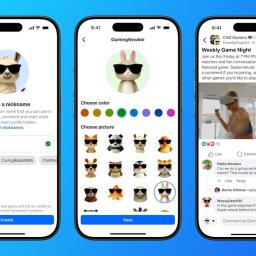 |
by Ian Carlos Campbell on (#71N5R)
Meta has long required Facebook users to post under their real names (with some exceptions), but at least for Facebook Groups, the company is now offering new options. Members of Facebook Groups will now be able to participate under a custom nickname and avatar, rather than being forced to use their real name or post anonymously.You can set a custom nickname via the same toggle that lets you create an anonymous post, Meta says. Nicknames have to be enabled by a group's administrators, and in some cases individually approved, but once they are, you can switch between posting under your real name or a nickname freely. The only other limitation is that the nickname needs to comply with Meta's existing Community Standards and Terms of Service. While you set your new nickname, you can also pick from a selection of custom avatars, which seem to mostly be pictures of cute animals wearing sunglasses.Groups are one of several areas of Facebook that Meta has continually tried to tweak in the last few years to bring back users. In 2024, the company introduced a tab that highlighted local events shared in Facebook groups. More recently, it added tools for admins to convert private groups into public ones to try and draw in new members. No single change can make Facebook the center of young people's lives in the way it was in the early 2000s, but letting people use what amounts to a username might encourage Facebook users to explore new groups and post more freely.This article originally appeared on Engadget at https://www.engadget.com/social-media/meta-is-bringing-usernames-to-facebook-groups-231405698.html?src=rss
|
 |
by Ian Carlos Campbell on (#71N5S)
Hytale, a more action-packed take on Minecraft, will be available for $20 when it relaunches in early access, Hypixel Studios announced on X. The developer shared that it planned to relaunch Hytale earlier this week after successfully reacquiring the rights to the game from Riot Games.Alongside its $20 "Standard" edition, Hypixel also plans to offer $35 "Supporter" and $70 "Cursebreaker" editions of Hytale with additional in-game cosmetics. Pricing the game at $20 is an acknowledgement of how unfinished it is, according to Hypixel Studios co-founder Simon Collins-Laflamme. "I'm pricing Hytale as aggressively low as possible," Collins-Laflamme said in an X post. "The game is unfinished and runs on a build from over four years ago. Charging more didn't feel right. I don't think the game is good yet."
|
 |
by Will Shanklin on (#71N37)
Here's some light - and revolting! - reading while we wait for the Epstein Files to be released (or stonewalled). You can now peruse the Jeffrey Epstein emails, recently released by Congress, in a simulated Gmail account."You're logged in as Jeffrey Epstein," the Jmail website reads. (Ick.) Luke Igel, CEO of Kino, and software engineer Riley Walz collaborated on the project. The latter is one of the creators of the Panama Playlists, which (in a similar light) turned Spotify's lax privacy into a website for public figures' "leaked" musical tastes.Jmail is about as faithful a recreation of Gmail as you could imagine. Just like a real inbox, the messages are sorted from the most recent, up to the eve of Epstein's 2019 arrest for the sex trafficking of minors. It includes a working search feature.Screenshot of the Jmail project. A simulated Gmail inbox of Jeffrey Epstein, using real emails released by Congress.Luke Igel / Riley WalzThe US House Oversight Committee released the emails on November 12. Their revelations put Donald Trump's relationship with the sex trafficker back in the spotlight. The president's name appears many times in the more than 20,000 documents. In one, the late sex offender claimed Trump "knew about the girls."In a 2011 email to Ghislaine Maxwell, Epstein said Trump "spent hours at my house" with someone whose name was redacted. (The committee said it was a victim.) In a 2017 thread, Epstein described the current president as "worse in real life and upclose." In 2018, the disgraced financier boasted he was "the one able to take [Trump] down."Another public figure who came out looking even worse than before was the Andrew formerly known as "Prince" (Andrew Mountbatten-Windsor). He told Epstein in 2011, "We're in this together." Then there's former Treasury Secretary Larry Summers. He stayed in touch with Epstein as recently as 2019, long after the latter's 2008 arrest for soliciting underage sex. In the wake of the email dump, Summers was put on leave from Harvard and resigned from OpenAI's board.You can check out Jmail at the project's website. Nobody will fault you if you need to shower afterward (and perhaps douse yourself in bleach).This article originally appeared on Engadget at https://www.engadget.com/entertainment/you-can-now-search-the-epstein-emails-in-a-simulated-gmail-tab-203818438.html?src=rss
|
 |
by Andre Revilla on (#71N39)
The breadth and reach of Australia's pioneering social media ban grows as livestream platform Twitch has now been added to the list of banned platforms for users under 16 years of age. The nationwide ban is the first of its kind and encompasses Facebook, X, TikTok, Snapchat, YouTube and recently Reddit.According to the BBC, Australia's eSafety Commissioner Julie Inman Grant said Twitch had been included because it was "a platform most commonly used for livestreaming or posting content that enables users, including Australian children, to interact with others in relation to the content posted."No other platforms are expected to be added before the law goes into effect next month. Grant also said on Friday that Pinterest would not be included in the ban because the core purpose of the platform was not online social interaction.Under the ban, platforms are expected to take "reasonable steps" to prevent underage users from accessing their platforms, and face steep fees for failure to comply. While VPNs may provide a workaround in some instances, the law still creates an enormous barrier to entry for users under 16.Earlier this month, Denmark announced its lawmakers had reached a bipartisan agreement to enact a similar ban for users under 15, though details were scarce. In the US, several states have attempted to enact such a ban including Texas and Florida, though these measures either failed to pass or are held up in court. Even laws that don't go as far, such as Utah's law requiring parents to grant permission for teens to open social media accounts, are facing stiff opposition on First Amendment grounds.Concern around minors' social media continues to grow in the zeitgeist as evidence mounts surrounding the potential ill effects these platforms have on their youngest users.This article originally appeared on Engadget at https://www.engadget.com/social-media/australia-is-adding-twitch-to-its-social-media-ban-for-children-202033276.html?src=rss
|
 |
by Ian Carlos Campbell on (#71N3A)
Ubisoft has announced a new game prototype featuring voice-controlled AI teammates that understand visual context and natural language. This "Teammates" project builds on the Neo NPCs Ubisoft showed off with Nvidia in 2024 to demo in-game AI that can naturally respond to players. A key difference this time, besides the complexity of the interactions the prototype supports, is that Teammates is already being played in a closed playtest with "a few hundred players," Ubisoft says.Teammates, even if Ubisoft describes it as a playable "experimental research project," still uses the basic concepts of a first-person shooter. The prototype casts players as "a member of the resistance in a dystopian future, tasked with moving through an enemy base to locate five missing members of their team," where directing in-game AI characters is key to success. Ubisoft came up with three AI NPCs for the project, "Jaspar," an AI assistant with awareness of in-game lore and the ability to adjust game settings on the fly, and "Pablo" and "Sofia," robotic characters that are physically present in the game and can respond to commands.Jaspar is both a diegetic and non-diegetic presence in Teammates.UbisoftBased on footage shared with Engadget, Ubisoft's AI characters not only understand voice commands, but also have a visual awareness of what the player is seeing. A direction to "stand behind a barrel" prompted Sofia to take into consideration where the player was looking and position itself appropriately. In the version of Teammates available in the closed playtest, Ubisoft also uses Jaspar to onboard and teach players about the basics of the game. In most cases, the AI characters seemed overly chatty and verbose, but Ubisoft is experimenting with letting players choose sets of personalities for Sofia and Pablo - including an option curiously labelled "Bad Cat and Good Boy" - that can change up how each character expresses itself."This technology opens doors to new, personalized experiences," Ubisoft's Data & AI Director Remi Labory shared in the Teammates announcement. "Player input shapes character reactions in real time, something traditional development can't achieve. We're also delivering a full pipeline, with the experience taking players from onboarding to debrief, which is a first."Ubisoft has explored applying generative AI to other parts of the development process in the past. The company's Ghostwriter tool, introduced in 2023, uses AI to generate first drafts of in-game dialogue. Ubisoft also recently adimitted to publishing Anno 117: Pax Romana without removing its AI-generated loading screen art.Ultimately, the underlying technology powering Teammates could appear in other Ubisoft projects in the future. The company is collecting feedback from its playtest to apply towards future research, but Ubisoft suggests the middleware it created for Teammates already works with both its Snowdrop and Anvil engines, opening up the tool for future teams to use in their games.This article originally appeared on Engadget at https://www.engadget.com/gaming/ubisoft-made-a-prototype-game-with-voice-controlled-ai-teammates-200834163.html?src=rss
|
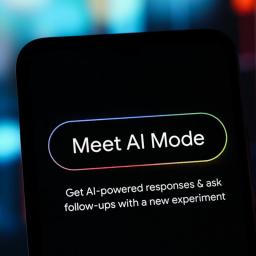 |
by Lawrence Bonk on (#71N0Z)
Google has started inserting ads into query results from its AI Mode, which was originally spotted by an SEO consultant named Brodie Clark. These ads show up in the bottom of search results in the Gemini-powered AI Mode. They are labeled as "sponsored" content, but otherwise look similar to other links whipped up by the chatbot.Google says this is just a test and that ads shouldn't be showing up for all users. The company also told 9to5Google that there are no current plans to fully update AI Mode to incorporate ads. Those are nice words, but AI has to make money somehow and ads seem to be a good way to do that.
|
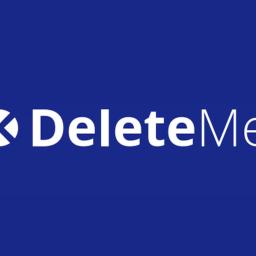 |
by Sam Chapman on (#71N10)
My colleagues on Engadget's buying advice team have put out great recommendations for physical gadgets like this humble fabric shaver that are on sale for Black Friday. I, however, am an evolved being who swims in the digital ether, so my top product of the year lives only online - though DeleteMe will still improve your life wherever you are. From now until December 5, DeleteMe is offering 30 percent off all subscriptions with the coupon code BFCM30OFF25. Chances are you've seen at least one public-facing "people search" site. You know the ones: they usually have names like 411.info or Find.people, and you can type in a person's name and find all the info the site has been able to scrape on them. If you search your own name, it's hard to avoid immediately running to the kitchen to make yourself a tinfoil hat. The most annoying thing is that these "data broker" sites are perfectly legal to run and use. However, that's also their Achilles' heel. If they want to operate in the open, brokers legally have to include a way for you to remove yourself from their database. Most of them make it as aggravating and time-consuming as possible, but the option is there. That's where DeleteMe comes in. All you have to do is sign up and enter all the data you want removed from brokerage sites. DeleteMe handles the rest. It searches for your information on people database sites, automatically sends opt-out requests, bugs the broker if they don't comply quickly enough and gives you a weekly report on how it's doing. You do have to be OK with DeleteMe itself having your data, but I trust them way more than the randos over at violate.privacy. It's so much faster than handling all the opt-out requests yourself, which - if you've ever tried it - rapidly becomes a full-time job. Since I've been using DeleteMe, I almost never get spam calls or texts anymore, except in short bursts before its crawlers catch my name on another site. And yes, it doesn't work on shady data brokers who don't follow the rules, but it's still a massive reduction of your online footprint. The only problem is that it's pretty expensive, so I strongly recommend jumping on this Black Friday deal. A few months on DeleteMe should be long enough for you to see if it reduces spam for you - and I'm betting it will.This article originally appeared on Engadget at https://www.engadget.com/deals/the-most-effective-anti-spam-tool-ive-ever-used-is-on-sale-for-black-friday-190526952.html?src=rss
|
 |
by Will Shanklin on (#71N11)
Nothing Phone 3 owners, your Android 16 update is here. Owners of other models? Well, you'll have to wait a bit longer. Regardless, the company's Nothing OS 4.0 update brings Google's newest mobile software, along with a bunch of UI tweaks.In addition to Android 16, Nothing OS 4.0 should deliver a smoother, zippier experience. The company promises "faster responses, cleaner visuals, smoother interactions" and more. Along those lines, app transitions, the notification shade and gestures have been redesigned to respond "with sharper tactility and depth."Nothing also redesigned its first-party icons, with cleaner, more minimal styling. "The home screen feels balanced, modern and comfortable to use," the company claims. Status bar icons have been refined, drawing inspiration from Android 16's stylings. There are also new lock-screen clocks to choose from, and an "extra dark mode" (in addition to standard dark mode), designed for nighttime reading.A marketing grid, showcasing Nothing OS 4.0's new features.NothingThe Glyph Interface has always been one of Nothing's most unique features, and it gets some updates, too. Glyph Progress integrates with Android 16's Live Updates. "Rides, deliveries, and timers now sync across your screen and the Glyph Interface," as the company describes it.You can read up on all the changes on the release page. Nothing OS 4.0 is rolling out now to the Nothing Phone 3. Most other devices will start seeing it "over the coming weeks." The company's (recently spun off) CMF brand devices will receive the update by the end of 2025. Finally, Phone 3a Lite owners have to wait until "early next year."This article originally appeared on Engadget at https://www.engadget.com/mobile/smartphones/android-16-starts-rolling-out-to-nothing-phones-182637951.html?src=rss
|
 |
by Andre Revilla on (#71N12)
SpaceX has confirmed that its third-gen Super Heavy Booster, the first stage of the two-stage Starship system, suffered an explosive gas failure of sorts during testing on Thursday morning. In a post on X, the aerospace company said, "Booster 18 suffered an anomaly during gas system pressure testing that we were conducting in advance of structural proof testing."There was no propellant inside the booster as the engines were not installed at that point. No injuries were reported and the company shared that personnel are always kept at a safe distance during these types of tests. The company said it will "need time to investigate before we are confident of the cause."The explosive release of gas, or whatever it was, seems to have blown out the side of the bottom half of the booster. Pictures taken by SpaceX content creators show this in detail. Clips of the livestream show the incident in question at around 4AM on Friday.
|
 |
by Matt Tate on (#71MYK)
After several delays, Analogue finally started shipping its 4K remake of the Nintendo 64 this week. That was great news for those lucky enough to have pre-orders secured, but the console was firmly sold out beyond that first wave of shipments. However, the company has now announced that it will have new stock of the Analogue 3D ready to go from November 24.You'll be able to order from 8am PST on the day, with orders set to start shipping on December 2, once Analogue has honored all of its original pre-orders. This batch will likely go very quickly too, and if you do manage to get one, you'll have to accept a (seemingly tariff-related) price $20 hike, with the Analogue 3D now costing $270.As with previous Analogue systems, the reimagined N64 uses an FPGA (field programmable gate array) chip to emulate Nintendo's original hardware. FPGA-based systems are more accurate than software emulation options and deliver reduced input lag.Every N64 cartridge is supported, according to Analogue, including both PAL and NTSC variants, and the 3D is capable of 4K output with variable refresh rate. You also get an "original display mode" filter to faithfully recreate the look of gaming on your dusty old CRT.A word of warning, though: while our review of the Analogue 3D praised the hardware design and strength of the emulation, our reviewer's biggest mark against the console is that a lot of N64 games just aren't very fun to play in 2025. Still, if you still have the likes of Mario 64 and Ocarina of Time lying around in a cupboard, you'll no doubt have an enjoyably nostalgic holiday season with the Analogue 3D, should you successfully get hold of one next week.This article originally appeared on Engadget at https://www.engadget.com/gaming/the-analogue-3d-will-be-restocked-on-november-24-but-itll-cost-20-more-173615217.html?src=rss
|
 |
by Jeff Dunn on (#71MYN)
The truth is, most gaming headsets aren't great values. I've tested a ton of them for our buying guide, and while the space has improved over time, it remains far too centered on branding and marketing. Too much of what passes by my desk comes off as overpriced compared to a good set of normal" headphones in the same range, both in audio and build quality. If you have a pair you love, more power to you. But generally speaking, these things tax you for the perception of being specialized for gaming. In reality, most are just OK headphones with a mic, a logo and maybe some fancy RGB lighting attached. All that said, there are always exceptions to the rule, and a few headsets have stood out as actually being worth the money. My current favorite is the Turtle Beach Atlas Air, which is currently on sale for $130 at various retailers as part of a Black Friday deal. That's the cheapest it's been since February, $50 off its MSRP and $20 below its street price over the last month. When it's discounted to this extent, it's the rare gaming headset I'd call a solid bargain. The hook with the Atlas Air is that it's one of the few wireless headphones (let alone headsets) with an open-back design, meaning its ear cups don't completely seal off your ears from air and outside noise. Pairs like this aren't for everyone: They both let in and leak lots of ambient sound, so if you don't use them in a quiet room, you and anyone nearby will probably be distracted. On the flipside, this can be a positive if you don't want to be completely shut off from your surroundings. More notably, they can produce a far more spacious and natural sound than closed-back models. Games feel more like they're happening around you instead of being confined to a space in your head. All of this holds true with the Atlas Air. Going from this pair to a traditional headset often makes it feel like a chunk of the world has been lopped off - giant boss fights in games like Elden Ring or Final Fantasy XVI sound more narrow, and it becomes harder to gauge where exactly an opponent is coming from in a competitive shooter like Counter-Strike 2. It helps that the Atlas Air is also tuned well. It's not as dynamic as the best non-gaming open headphones, and like most open-backs it doesn't get super deep bass, so explosions and gunfire lack a little boom. But it's balanced and easygoing, with a jump in the treble that helps dialogue and footsteps sound clearer. The headset itself is exceptionally comfortable beyond that. It's lightweight at 0.66 pounds, and the big memory foam earcups clamp down gently without trapping much heat. The battery lasts a solid 50-60 hours on a charge, and while the mic isn't the absolute best I've tested, it still lets you come through clearly. It all works with PC and PS5 by default, and you can pair with a Switch or Switch 2 over Bluetooth. There's no Xbox wireless support, unfortunately, though you can at least use an included 3.5mm cable. And though the plastic design isn't exactly premium," it hasn't developed any sort of cracks or creakiness in the months I've used it. For $130, it's totally fine. There are other things to nitpick: You can't listen to two devices connected over the USB dongle and Bluetooth simultaneously; you want to ignore Turtle Beach's companion software as soon as you update the firmware; and there isn't much room to adjust the headband, so certain heads may struggle to find the best fit. The design is also kind of ugly, if I'm being honest. Still, in an samey market, the Atlas Air stands out. If you know you can live with the trade-offs that come with any open-back headset, it's a unique value at this price.This article originally appeared on Engadget at https://www.engadget.com/deals/in-a-rare-deal-my-favorite-gaming-headset-is-28-percent-off-for-black-friday-165029987.html?src=rss
|
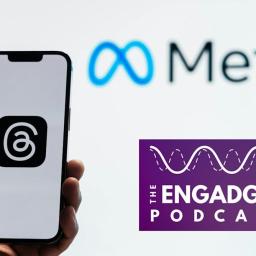 |
by Devindra Hardawar on (#71MSK)
So it turns out Meta isn't a monopoly, at least according to a federal judge. In this episode, we dive into Meta's victory in the FTC's antitrust case, which it seems to have won mainly thanks to TikTok's existence. Also, we chat about the Cloudflare issue that took down a huge portion of the web this week, as well as Roblox's plan to collect kids' selfies for age verification. We also carve out some time to chat with the audience and answer your pressing tech questions.Subscribe!
|
 |
by Mat Smith on (#71MSJ)
Square Enix loves to remaster, remake and reheat its RPGs. The latest title to get the treatment is the critically acclaimed Final Fantasy spin-off, Final Fantasy Tactics.Tactics has undergone its own remakes before, with War of the Lions bringing the game to the PlayStation Portable and, eventually, iOS and Android. However, now across all the major consoles, Final Fantasy Tactics: The Ivalice Chronicles is a different remake again - and even dismisses some of the characters and additions in War of the Lions. I never finished either version, and two things are apparent: I have missed out, and this is hard.Originally released just a few months after Final Fantasy VII, which introduced polygon characters, FMV and more, Tactics' sprite aesthetic seemed quaint in comparison. With compact isometric levels, turn-based battles are closer to Tactics Ogre and Disgaea than the lineup and strike battles of mainline Final Fantasy games of the time. The game was a critical hit, even if it didn't match the popularity of Cloud et al.Tactics is far less forgiving. Battle dynamics lean heavily on random number generation; your squad is often outnumbered, and you can easily be undone when resurrection spells and defensive magic fail to land. The first time my revival spell failed, I audibly swore at my Switch 2. But the taste of defeat? It's usually seasoned just right. It's gaming umami.I wanted more, even at the notorious difficulty spike in a battle against knight-gone-wrong Wiegraf. In this fight, I faced him, a far more powerful fighter, solo, and proceeded to die roughly 20 times in a row. On standard difficulty, you rarely have to do this, but I had to craft a specialized version of the protagonist that could hit hard, heal himself, and generally just stay alive long enough for the second stage of this fight.The Ivalice Chronicles can be played in two ways. The modern version features high-resolution sprites, backgrounds, and effects, while retaining the original's isometric view, which can be rotated and tilted for the best view of the action. There's an HD-2D nod with a thick depth of field blur to add a more modern feel.If you want your Tactics pixelated, you can play the original version, although you can't transition between the two, which seems like a missed opportunity. (You can toggle your saves across the versions in other RPGs with similar dual versions, like Dragon Quest XI S.)More than the graphical downgrade, though, you're missing out on polished voice acting, which not only elevates the diorama cutscenes and political intrigue but also peppers battles when you field main characters and they unleash certain job class attacks.Talking of jobs, Tactics' system remains the same, with base jobs like knight, white knight and freelancer giving way to dragoons, summoners and, much later, bizarre-but-powerful roles like arithmetician (the power of math!) and ninja.The difficulty curve of Tactics is very much here. It was embarrassing how much I struggled to overcome spikes in difficulty, but then again, I never finished the original. (And, like a true hero, I refused to research broken job builds or easy grind spots.)A crystalline attack hits an enemy in an isometric battle.Square EnixYou can grind, raise levels of your characters, rake in money, and pick up crucial job points. But the wiser method is figuring a battle loop where your characters repeat actions. When the character attacks, heals, steals and generally does anything besides just moving or staying put, it earns Job Points. These are the most crucial parts of growing your squad, as abilities and passive skills can be ported between jobs; it's how you can customize your entire party to demolish certain kinds of enemies. Lots of archers? A skill called archer's bane means they'll struggle to get a hit. Lots of slow-moving enemies in a tight space, rain hell with your summoner, but with an ability to regain MP as they move around.At times, it still feels like a slog to repeat battles and garner enough JP for that skill you know will turn the tide of a challenging fight. Fortunately, a new battle speed toggle makes them a little less dull.It's funny to feel nostalgic about a game I never played the first time around. But there's something familiar and cosy to Final Fantasy Tactics. I'm surprised at the depth of what seems at first to be a pretty simple fighting system.While the voice acting and additional quality-of-life upgrades are great, it's a shame that Square Enix didn't include extra jobs (and characters) introduced in other iterations, like the PSP version. Still, it's another great tactical RPG for the Nintendo Switch, increasingly the best place to play the genre. Fortunately, however, it's available across PS5, PS4, Xbox Series X/S, and PC as well.
|
 |
by Mat Smith on (#71MQG)
Happy Friday! As the annual tech discount chaos of Black Friday approaches (good deal here and here and several more here), European policymakers have proposed easing some of the EU's strictest regulations on artificial intelligence and data privacy. The move aims to remove roadblocks for tech companies and stimulate business growth in the region, potentially marking a major pivot away from the bloc's reputation as the industry's toughest regulator.Changes would allow AI companies to access shared personal data to train their models, while also overhauling GDPR cookie rules. Instead of constant pop-ups, users could set preferences once in their browser and give consent with a single click. (OK, I'm onboard with that.)Strict rules for high-risk" AI applications, originally set for next summer, may be delayed until proper support tools are in place. Critics are warning this could be seen as Europe bowing to pressure from Big Tech and political shifts in the US. The proposal now heads to the European Parliament.- Mat SmithGet Engadget's newsletter delivered direct to your inbox. Subscribe right here!The news you might have missed
|
 |
by Georgie Peru on (#70HX6)
Why settle for tiny pieces of chocolate when you could unwrap a Pokemon card, a Funko Pop or a Star Wars LEGO ship instead? Advent calendars have gone full geek mode, with options for fans of movies, comics, games and even science. They're the perfect way to add some holiday cheer to your desk, game shelf or living room. Consider this your guide to the best geeky countdowns for 2025. Best advent calendars for 2025 Check out the rest of our gift ideas here. This article originally appeared on Engadget at https://www.engadget.com/our-favorite-2025-advent-calendars-you-can-still-get-now-top-picks-from-lego-pokemon-funko-pop-and-more-120042964.html?src=rss
|
by Jeff Dunn on (#6ARNF)
Sometimes, the best gaming headset doesn't have to be a gaming headset" at all. While many people view these devices as their own category, they're ultimately still headphones, just with a boom mic and some fancy branding attached. While the overall quality of dedicated headsets has improved over time, they still tend to cost extra compared to a good pair of wired headphones (which, yes, still exist). If you need to chat with friends, you can always buy a microphone separately and get superior sound quality there as well.
by Amy Skorheim on (#693VN)
If you hate losing stuff - your keys, backpack, jacket, purse or just about anything else - a Bluetooth tracker can help. These little tags pair with your smartphone so you can make your keys chirp from the couch cushions or your jacket sing from the hall closet. Even better, these fobs tap into larger community networks, like Apple's Find My and Google's Find Hub, to locate tagged items you misplace out in the world. We tested Apple AirTags, Samsung's own trackers and many third party fobs from Chipolo, Pebblebee and others that work with either the Apple or Android networks. Here are the best Bluetooth trackers that'll make sure you don't lose a thing. Table of contents
 |
by Mariella Moon on (#71MH1)
Amazon has launched Alexa+, its next-generation digital assistant, in Canada. The company unveiled the new assistant in February, and it has been making its way to more and more people since. Canada is the first region outside the US to get access Amazon's upgraded Alexa. Like the version that rolled out in the US, users can communicate with Alexa+ in natural language. They can say I'm cold," for instance, and the assistant will turn up the heat in their home. If they say It's dark," Alexa+ can switch on the lights for them.In Amazon's announcement, Allison Siperco, the Alexa manager for Canada, said the assistant understands Canadian culture and regional expressions. It can understand distinctly Canadian topics, such as the country's hockey teams and musicians. In addition, the assistant links with services Canadians use. It can make restaurant reservations for them through OpenTable, connects them to CBC news and help them look for and buy items from their e-commerce platforms. Siperco said the assistant will also support Yelp, Uber Eats, Suno and TripAdvisor in the country soon."Alexa+ is capable of adapting its tone to everyone in the household, suggesting different routines based on the user. It can suggest meditation, for example, to someone who's had a long day at the office. And it can remember if someone has dietary restrictions when recommending restaurants. Alexa+ can also help users shop by finding items with the best pricing, by creating grocery lists for them while taking dietary restrictions into account, as well as by comparing features across products and summarizing reviews on Amazon Canada.Amazon's upgraded assistant is free during its Early Access phase, though those who are interested to try it out right now will have to purchase the new Echo Show 8, Echo Show 11, Echo Dot Max or Echo Studio. After Early Access, it will remain free for Prime subscribers, while everyone else will have to pay $28 CAD a month for it.This article originally appeared on Engadget at https://www.engadget.com/ai/amazon-alexa-is-now-available-in-canada-050827689.html?src=rss
|